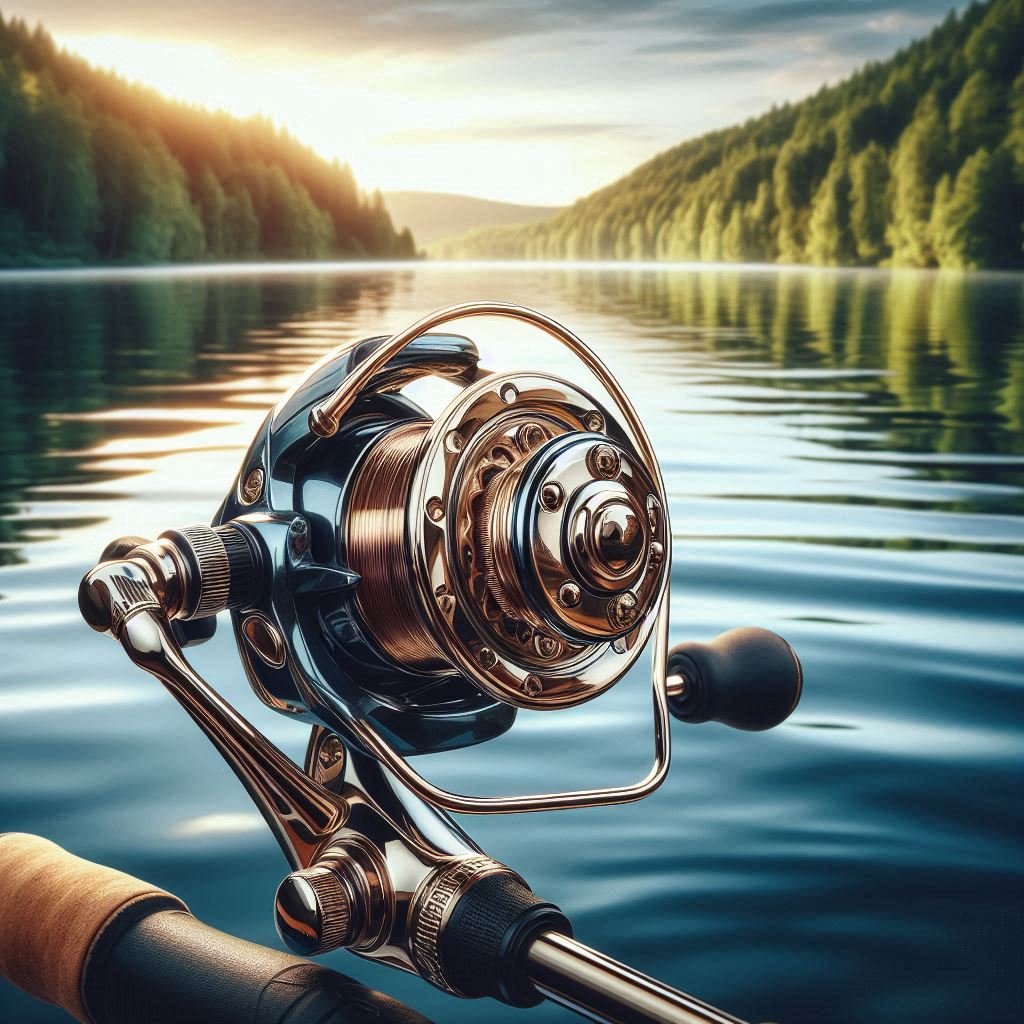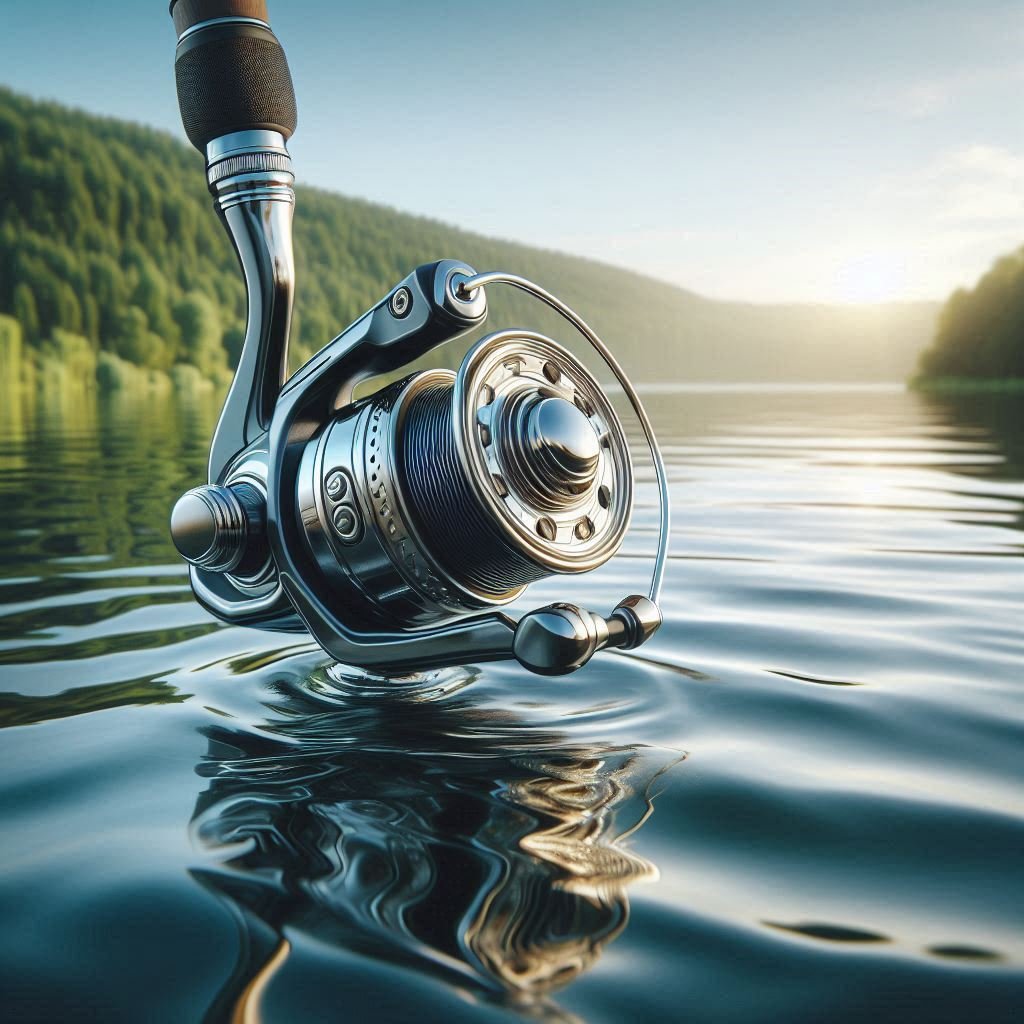When you’re looking to upgrade or replace your fishing reel, understanding the fishing reel gear ratio is essential. Simply put, the gear ratio of a fishing reel refers to how many times the spool turns for every turn of the handle. This measurement is a key factor in how fast or slow your line is retrieved, which directly impacts your fishing technique and success.
Understanding fishing reel gear ratio will help you select the best reel for your needs, whether you’re chasing big game fish or enjoying a casual day on the water. In this guide, we’ll break down the concept of gear ratio, explain its significance, and show you how to choose the perfect gear ratio for your fishing style.
Fishing Reel Gear Ratio Explained

The fishing reel gear ratio is displayed as a number like 5.1:1, 6.4:1, or 7.5:1. The first number represents the number of times the spool turns for every complete turn of the handle. For example, in a 6.4:1 gear ratio, the spool rotates 6.4 times with each handle turn. The second number represents the number of spool rotations, providing insight into how fast the reel retrieves line.
A higher gear ratio generally results in a faster retrieve, meaning the line comes back onto the reel quicker. This can be beneficial when you need to reel in quickly, such as when you’re fishing for fast-moving species or when you’re reeling in large baits. Lower gear ratios offer slower retrieval speeds, which might be more advantageous for fishing techniques like bottom fishing or when you need more power to bring in large fish.
How Does Gear Ratio Affect Fishing Reel Performance?
The gear ratio on fishing reels directly impacts how the reel performs in different fishing scenarios. Whether you’re aiming to fish deeper waters or need a fast retrieve for surface lures, choosing the right gear ratio ensures you’re well-equipped for the task.
- High Gear Ratios (7:1 and above): These reels offer fast line retrieval. They are ideal for techniques that require quick action, such as fishing with topwater lures, jerkbaits, or spinnerbaits. A higher gear ratio allows you to retrieve the lure quickly, keeping it in the strike zone longer.
- Medium Gear Ratios (6:1 to 6.4:1): A great middle ground, these reels offer a balance between speed and power. These ratios work well for a variety of fishing techniques, including those that require moderate speed and power, such as fishing soft plastics or crankbaits.
- Low Gear Ratios (5.0:1 and below): These reels are slower but provide more power. This is ideal for techniques like deep-water fishing, trolling, or when you’re working with heavier lures that require more torque to pull in.
Each of these gear ratios has its advantages, and knowing when to use them is key to maximizing your fishing efficiency.
Fishing Reel Gear Ratio Chart
A fishing reel gear ratio chart can help you visualize which ratios are best suited for different fishing techniques. Here’s a simple guide to understand the ideal ratios for various methods:
| Fishing Technique | Recommended Gear Ratio |
|---|---|
| Topwater Lures | 7:1 to 8:1 |
| Crankbaits and Jerkbaits | 6:1 to 7:1 |
| Spinnerbaits | 6:1 |
| Soft Plastics | 5.4:1 to 6.4:1 |
| Bottom Fishing | 5.0:1 to 5.4:1 |
| Heavy Lures/Big Fish | 4.4:1 to 5.0:1 |
| Trolling | 4.6:1 to 5.0:1 |
This chart is just a guideline, and depending on your specific fishing conditions, personal preference, or even the species you’re targeting, you may prefer different gear ratios. It’s always worth experimenting with different setups to see what works best for you.
What Does Gear Ratio Mean on a Fishing Reel?

Simply put, the gear ratio on fishing reels refers to the relationship between how many times the spool turns versus how many times you turn the handle. If you’re wondering how this translates into practical use, here’s an example:
- A reel with a 6.4:1 ratio means that for every complete turn of the handle, the spool will rotate 6.4 times.
- A reel with a 5.1:1 ratio means the spool turns 5.1 times for every handle turn.
For a quick retrieve, a higher gear ratio is beneficial because it brings the line in at a faster pace. On the other hand, for heavier baits or when fighting larger fish, a lower gear ratio gives you more torque and power.
Choosing the Best Fishing Reel Gear Ratio for Your Fishing Style
When it comes to choosing the right fishing reel gear ratio, your fishing style will play a big role. Let’s dive deeper into how to choose the right ratio for different fishing techniques:
Fishing with Lures and Jerkbaits
If you’re into casting lures, particularly jerkbaits, you’ll want a fast retrieve. In this case, a high gear ratio like 7:1 or even 8:1 would work best, as it allows you to quickly reel in the lure while keeping it in motion for more bites.
Fishing with Crankbaits
Crankbaits often require a more moderate retrieval speed. Medium gear ratios between 6.1:1 and 6.4:1 are a perfect balance between speed and control, allowing you to work the crankbait effectively.
Bottom Fishing and Heavy Baiting
When fishing for species that dwell at the bottom of the water or when using heavier baits, you’ll need extra power to reel in larger fish. Low gear ratios such as 5.0:1 or 4.4:1 give you the torque needed to drag heavier weights through the water with ease.
Trolling
For trolling, where you’re often moving your bait at slower speeds, a low to medium gear ratio around 4.6:1 to 5.0:1 gives you the control needed to keep the bait at a consistent speed without burning out your reel.
Deep Water Fishing
When fishing in deeper waters, a slower gear ratio will allow you to reel in your catch without exhausting yourself. Something in the 4.4:1 to 5.0:1 range provides the necessary power for reeling up fish from the deep.
Fishing Reel Gear Ratio and Line Capacity

Another aspect to consider when selecting your gear ratio is how it affects your line capacity. High gear ratios often mean faster retrieval speeds, but they can also result in less line being retrieved per turn. Lower gear ratios provide more line retrieval per turn but at a slower pace.
For example, if you need a high line retrieval rate for fast-moving fish, go for a higher gear ratio like 7.1:1. If you’re working with deeper fish, go for a slower gear ratio to provide better control while reeling in heavier lines or larger fish.
Fishing Reel Gear Ratio and Drag System
The drag system also works in tandem with your reel’s gear ratio. When choosing a reel, make sure that the gear ratio complements the drag system you’re using. A higher gear ratio might require a stronger, more responsive drag system, whereas a lower gear ratio will provide more consistent torque when battling large fish.

